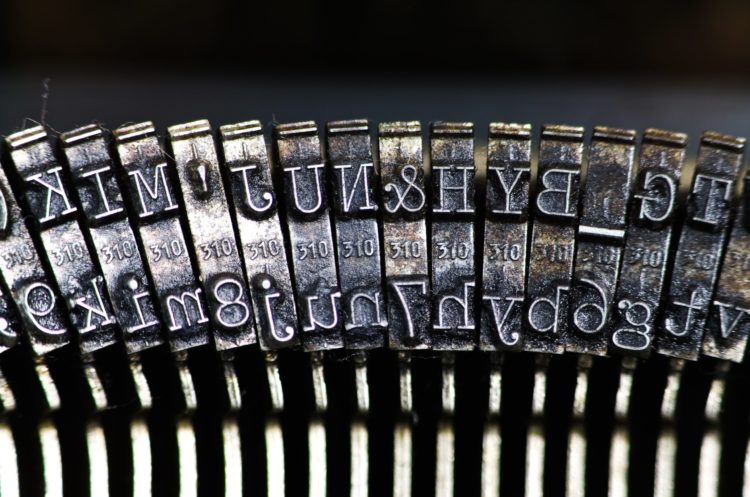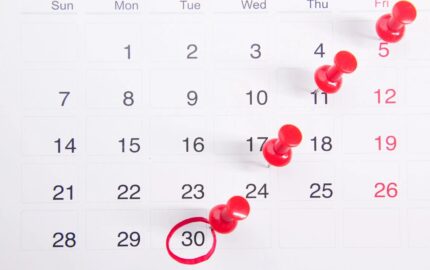EDITOR'S NOTE: This is one of two essays about the new book "A Place Called Writer L," a collection of listserv discussions from the 1990s and 2000s. Tomorrow, co-editor Stuart Warner writes of the origins and ending of the early online community.
By John Clayton
In the 1990s, when I was a young writer hoping to improve, I did a very ’90s thing: I joined a listserv. I added my email address to a list of writers who received, every evening, the latest missive from a moderated discussion board. It was called WriterL, the “writer listserv.”
I think about it often — or, at least, as often as I assume other writers think about their graduate school experiences. WriterL was like my MFA in Creative Nonfiction, except that it was just a few minutes of time every day for a dozen or so years. (WriterL ran from 1994 to 2013; I must have joined around 1996 or ’97.) I say Creative Nonfiction because the list wasn’t for all writers. It was geared to experts in the sub-genre I find most meaningful: scrupulously factual nonfiction that reads like fiction because it incorporates elements of narrative.
The last few weeks I’ve been remembering a lot of the wisdom I gleaned from WriterL as I’ve been reading a newly-published compilation titled “A Place Called WriterL: Where the Conversation Was Always About Literary Journalism.” The collection, available in paperback and as an ebook, resembles another 20th century tradition, the greatest hits album. Stuart Warner, now retired from a renowned career as a newspaper editor, curates some of the listserv’s most provocative discussions, assembling them into topical chapters.
In the foreword to the book, Warner calls it “a family album, remembering the best of times.” Certainly some of the discussions feel quaintly nostalgic. For example, the fabrications of James Frey’s “memoirs” get plenty of play. At another point, a journalist marvels that his new laptop computer can take pictures of a setting he plans to write about — and the modern reader marvels at the pre-cellphone world.
Warner and his co-editors, the listserv’s founders Jon and Lynn Franklin, convey a sad nostalgia. Jon Franklin, a two-time Pulitzer winner, also authored the classic guide “Writing for Story,” which remains foundational almost 30 years after it was published. Novelist Lynn Franklin moderated the lively discussions on WriterL. Warner and Jon Franklin, along with many (or even most) of the listserv subscribers, came from the world of print newspapers. They wanted narrative journalism techniques to transform newspapers. To save newspapers. And to have newspapers fund this labor-intensive work.
That quest failed as an industry cure-all. But for individuals seeking a like-minded community of aspirational writers, its influence can’t be dismissed.
I was not a newspaperman. I was a freelancer. To me, the book’s nostalgia is saddest around the idea of a “moderated” discussion. Lynn Franklin’s role was essential: She could keep the discussion going or rein it in. She could find topics and pose questions. She could prod us collectively to respond to something, or prod any one of us as individuals to reconsider a too-heated response. It was the near-opposite of a Twitter free-for-all.
For me, at least, that made for a better learning environment. Thus, for me, revisiting these discussions feels like getting that MFA all over again.
Here are all the critical craft issues I continue to face: when to use first-person, and how much; how to build character and tension; how to find sources and how much to trust them.
Here are recapitulations of the key lessons I was learning at that point in my career: the importance of scene; the difference between quotes and dialogue; the value of the writer’s vision.
Here, too, is the inspiration that has always kept me going: the belief that this vision of the writer elevates nonfiction to art.
Many of these lessons can be drawn from Franklin’s book, “Writing for Story.” But the conversational tone of the back-and-forth captured in “A Place Called WriterL” — indeed, it consists almost entirely of literal conversations — made it feel more like the after-class bull sessions where (at least for me) the real learning gets done.
The craft lessons, I would argue, don’t change much. But the words used to describe them do. For example, in the Frey discussion, writing guru Roy Peter Clark suggested a needed distinction between the nonfiction memoir and the literary memoir. At the time, most of us loved the instinct (because nonfiction should have just one rule: never make stuff up), but hated the phrasing (because literary should refer to prose’s quality rather than its fictionality).
Reading the exchanges today, I couldn’t help but reflect that the issue is still with us. Now we tend to struggle with different words, like autofiction.
Likewise, the phrase literary journalism (before “Lit-J” was the name of a musician, it was the name of a genre) is in the compilation’s subtitle. But even back then, many of us were moving away from that descriptor. Personally, I was calling our work narrative nonfiction. And of course, the genre is still with us, though less so in newspapers than Warner and the Franklins would have liked. Now many give it a new name: longform.
As a working writer, I still seek to learn. Using less antiquated technologies, I follow discussions on the Longform Podcast, LitHub and, of course, Nieman Storyboard. At times, I fume: “We worked through all this on WriterL 20 years ago!” And then I appreciate: “Here's a new generation learning to master these age-old challenges.”
One of the courses that has most stayed with me from my undergraduate days is Art History. And the one I most regret not taking: History of Science. How did people and norms and cultures shape the artworks and advances that have made such a difference in our collective lives? Whether nonfiction writing is art or science (a topic we often debated on the listserv), “A Place Called WriterL” delightfully captures a slice of its history.
***
John Clayton is the award-winning author of narrative nonfiction/natural history books including Natural Rivals, The Cowboy Girl, and Wonderlandscape. His website is www.johnclaytonbooks.com.
By John Clayton
In the 1990s, when I was a young writer hoping to improve, I did a very ’90s thing: I joined a listserv. I added my email address to a list of writers who received, every evening, the latest missive from a moderated discussion board. It was called WriterL, the “writer listserv.”
I think about it often — or, at least, as often as I assume other writers think about their graduate school experiences. WriterL was like my MFA in Creative Nonfiction, except that it was just a few minutes of time every day for a dozen or so years. (WriterL ran from 1994 to 2013; I must have joined around 1996 or ’97.) I say Creative Nonfiction because the list wasn’t for all writers. It was geared to experts in the sub-genre I find most meaningful: scrupulously factual nonfiction that reads like fiction because it incorporates elements of narrative.
The last few weeks I’ve been remembering a lot of the wisdom I gleaned from WriterL as I’ve been reading a newly-published compilation titled “A Place Called WriterL: Where the Conversation Was Always About Literary Journalism.” The collection, available in paperback and as an ebook, resembles another 20th century tradition, the greatest hits album. Stuart Warner, now retired from a renowned career as a newspaper editor, curates some of the listserv’s most provocative discussions, assembling them into topical chapters.
In the foreword to the book, Warner calls it “a family album, remembering the best of times.” Certainly some of the discussions feel quaintly nostalgic. For example, the fabrications of James Frey’s “memoirs” get plenty of play. At another point, a journalist marvels that his new laptop computer can take pictures of a setting he plans to write about — and the modern reader marvels at the pre-cellphone world.
Warner and his co-editors, the listserv’s founders Jon and Lynn Franklin, convey a sad nostalgia. Jon Franklin, a two-time Pulitzer winner, also authored the classic guide “Writing for Story,” which remains foundational almost 30 years after it was published. Novelist Lynn Franklin moderated the lively discussions on WriterL. Warner and Jon Franklin, along with many (or even most) of the listserv subscribers, came from the world of print newspapers. They wanted narrative journalism techniques to transform newspapers. To save newspapers. And to have newspapers fund this labor-intensive work.
That quest failed as an industry cure-all. But for individuals seeking a like-minded community of aspirational writers, its influence can’t be dismissed.
Craft wisdom that remains relevant
I was not a newspaperman. I was a freelancer. To me, the book’s nostalgia is saddest around the idea of a “moderated” discussion. Lynn Franklin’s role was essential: She could keep the discussion going or rein it in. She could find topics and pose questions. She could prod us collectively to respond to something, or prod any one of us as individuals to reconsider a too-heated response. It was the near-opposite of a Twitter free-for-all.
For me, at least, that made for a better learning environment. Thus, for me, revisiting these discussions feels like getting that MFA all over again.
Here are all the critical craft issues I continue to face: when to use first-person, and how much; how to build character and tension; how to find sources and how much to trust them.
Here are recapitulations of the key lessons I was learning at that point in my career: the importance of scene; the difference between quotes and dialogue; the value of the writer’s vision.
Here, too, is the inspiration that has always kept me going: the belief that this vision of the writer elevates nonfiction to art.
Many of these lessons can be drawn from Franklin’s book, “Writing for Story.” But the conversational tone of the back-and-forth captured in “A Place Called WriterL” — indeed, it consists almost entirely of literal conversations — made it feel more like the after-class bull sessions where (at least for me) the real learning gets done.
The craft lessons, I would argue, don’t change much. But the words used to describe them do. For example, in the Frey discussion, writing guru Roy Peter Clark suggested a needed distinction between the nonfiction memoir and the literary memoir. At the time, most of us loved the instinct (because nonfiction should have just one rule: never make stuff up), but hated the phrasing (because literary should refer to prose’s quality rather than its fictionality).
Reaching a new generation of narrative writers
Reading the exchanges today, I couldn’t help but reflect that the issue is still with us. Now we tend to struggle with different words, like autofiction.
Likewise, the phrase literary journalism (before “Lit-J” was the name of a musician, it was the name of a genre) is in the compilation’s subtitle. But even back then, many of us were moving away from that descriptor. Personally, I was calling our work narrative nonfiction. And of course, the genre is still with us, though less so in newspapers than Warner and the Franklins would have liked. Now many give it a new name: longform.
As a working writer, I still seek to learn. Using less antiquated technologies, I follow discussions on the Longform Podcast, LitHub and, of course, Nieman Storyboard. At times, I fume: “We worked through all this on WriterL 20 years ago!” And then I appreciate: “Here's a new generation learning to master these age-old challenges.”
One of the courses that has most stayed with me from my undergraduate days is Art History. And the one I most regret not taking: History of Science. How did people and norms and cultures shape the artworks and advances that have made such a difference in our collective lives? Whether nonfiction writing is art or science (a topic we often debated on the listserv), “A Place Called WriterL” delightfully captures a slice of its history.
***
John Clayton is the award-winning author of narrative nonfiction/natural history books including Natural Rivals, The Cowboy Girl, and Wonderlandscape. His website is www.johnclaytonbooks.com.



